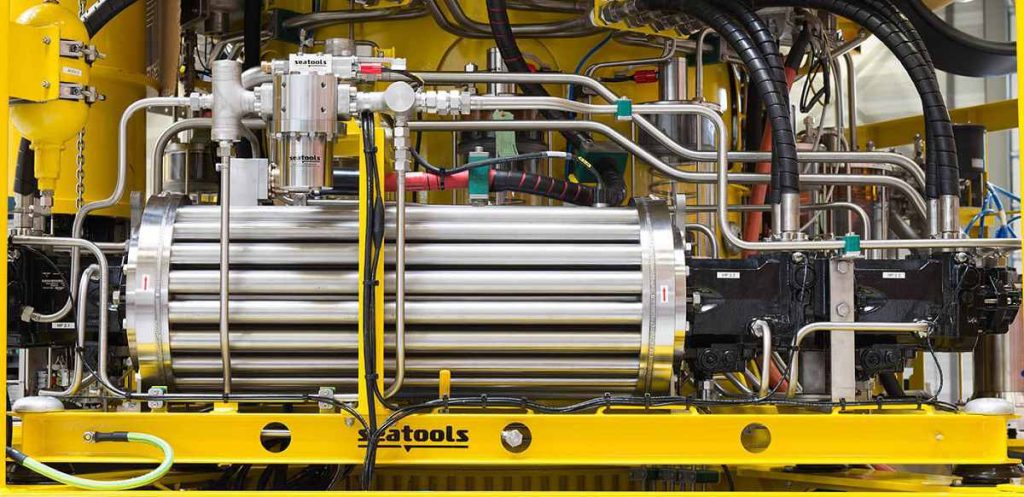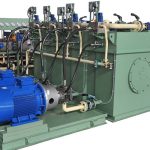Subsea hydraulic components have long been used for marine and deep sea applications. Even in the 1970’s large machines had started to use the first hydraulic components to help with underwater activities for industries such as oil and gas.
Tasks such as trenching, digging, drilling and other heavy machinery activities could be carried out at depths of up to 200 meters below the surface of the water. Hydraulic valves, machines and cylinders were used to drive manipulator arms, drilling tools and track drives.
In these early days it was relatively rare to see these types of machines in operation, so the components were usually costly. However, this evolved over the following years and deep sea hydraulics became an area that was marginally less costly to operate in.
In this century, focus is on deep sea hydraulics and its ability to assist with the sourcing and extraction of fossil fuels and minerals. Greater depths can be reached through the use of ROVs – remote operated vehicles / subsea crawlers. Depths of up to 6000m can now be reached and materials can be harvested using this new generation of subsea machinery.
It’s no longer necessary to position the harvesting and processing equipment on either a ship or a platform. It has to go down onto the seabed to carry out the necessary activities. Hydraulic machinery is ideal for operations such as this due to their power, precision and flexibility.
The type of applications that you’ll see subsea hydraulics used for include the handling of heavy loads and installation of heavy machinery. Tools used to build marine based structures on the seabed such as hydraulic hammers that drive piles are just one of the applications that are used. Others include civil engineering structures such as harbours, marinas and bridges that need to have foundations or objects anchored into the seabed.
ROVs also make it possible to carry out seabed test drillings for oil and gas industry operatives. They can also install heavy equipment that can protect pipelines and cables used for transporting oil and gas, from dangers such as shipwrecks, earthquakes and naturally strong sea currents. They can bury the pipelines into the ocean floor to keep them secure and safe from risks. The ROVs are highly sophisticated in their manoeuvrability and handling.
Another way that subsea hydraulics are used in marine related industries is for deep sea mining of the sea floor. A lot of deposits of high grade rare earth minerals including gold, silver and copper have recently been discovered in the Pacific Ocean. Subsea hydraulics make it possible to harvest them. For example heavy duty ROVs can be operated hydraulically in order to establish the construction required to harvest these minerals.
When it comes to subsea machinery, hydraulics can help with the launch and recovery of highly valuable and expensive subsea equipment in addition to the control of machines such as the ROVs.
There are many challenges and engineering obstacles that need to be overcome in order for hydraulic components to work in the deep sea. Not only must the materials be able to resist the high pressure of being underwater, and so very deep underwater, it’s essential that they can handle the pressure and the salt present in the water. One of seawater’s unfavourable powers is its ability to rapidly corrode materials. Therefore, protection against this corrosion is essential. This might be addressed by engineers with special coatings or by using materials that are corrosion resistant.
To prevent a short circuit, all hydraulic valves that are solenoid operated also have to be protected against contact with water. It’s not easy to hoist a machine up if it needs to be fixed. It’s important to provide subsea machinery with a lifespan that is both lengthy and maintenance free.
If you’re looking for reliable and durable subsea hydraulic power units, contact us today.



Comments are closed